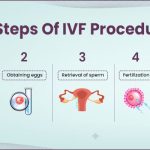How Much Does Reciprocal IVF Cost? Your Ultimate Guide to Understanding the Price Tag
Reciprocal IVF is a beautiful journey for many couples, especially those in same-sex relationships or facing unique fertility challenges. It’s a process that allows both partners to play an active role in creating their family—one provides the eggs, the other carries the baby. But as exciting as it sounds, the big question on everyone’s mind is: How much is reciprocal IVF going to cost me? The answer isn’t simple, and it depends on a lot of factors like where you live, your insurance, and the clinic you choose. Don’t worry—I’m here to break it all down for you in a way that’s easy to digest, with practical tips, fresh insights, and the latest info to help you plan.
Let’s dive into the world of reciprocal IVF costs, explore what drives the price, and figure out how you can make this dream a reality without breaking the bank.

What Is Reciprocal IVF, Anyway?
Reciprocal IVF, sometimes called co-IVF or shared motherhood, is a fertility treatment where one partner’s eggs are retrieved, fertilized with donor sperm, and then transferred into the other partner’s uterus. It’s a teamwork kind of deal—one of you contributes the genetic material, and the other gets to experience pregnancy and childbirth. Pretty cool, right?
This option has become super popular for lesbian couples who want both partners to feel deeply connected to the baby-making process. It’s also a lifeline for folks where one partner can’t carry a pregnancy due to medical reasons, but they still want to use their own eggs. The emotional payoff is huge, but the financial side? That’s where things get tricky.
The Big Picture: How Much Does Reciprocal IVF Really Cost?
Let’s cut to the chase: reciprocal IVF isn’t cheap. In the United States, you’re looking at a range of $15,000 to $30,000 per cycle on average. That’s a big window, I know, and it can climb higher depending on extras like medications, testing, or multiple attempts. Outside the U.S., costs vary wildly—think £10,000–£20,000 in the UK or €12,000–€25,000 in parts of Europe. These numbers might feel overwhelming, but hang tight—we’re going to unpack what’s behind them.
The cost isn’t just one flat fee. It’s a mix of medical procedures, lab work, medications, and sometimes hidden expenses that catch people off guard. Here’s a quick snapshot of what you’re paying for:
- Egg retrieval: Getting those eggs out safely.
- Embryo creation: Fertilizing the eggs with donor sperm in a lab.
- Embryo transfer: Placing the embryo into the carrier’s uterus.
- Medications: Hormones to stimulate egg production and prep the uterus.
- Extras: Think donor sperm, genetic testing, or freezing embryos.
Each piece adds up, and where you live or the clinic you pick can swing the total by thousands. Let’s break it down step-by-step so you know exactly what to expect.
Breaking Down the Costs: What’s Driving the Price?
To get a handle on how much reciprocal IVF costs, you need to see the pieces of the puzzle. Every step has its own price tag, and they stack up fast. Here’s a closer look at what you’re paying for, with some real-world numbers to ground us.
Egg Retrieval: The Starting Line
Egg retrieval is where it all begins. The partner donating the eggs goes through ovarian stimulation (more on meds later) and a minor surgery to collect the eggs. This part usually costs $5,000 to $10,000 in the U.S. Why the range? It depends on the clinic’s fees, the doctor’s expertise, and whether you’re in a big city or a smaller town. For example, a top-tier clinic in New York might charge $8,000, while one in a rural area could be closer to $5,500.
Embryo Creation: The Lab Magic
Once the eggs are retrieved, they’re fertilized with donor sperm in a lab. This process, called in vitro fertilization (IVF), involves skilled embryologists and high-tech equipment. Expect to pay $3,000 to $5,000 for this step. If you add intracytoplasmic sperm injection (ICSI)—where they inject sperm directly into the egg—it might bump up to $6,000. It’s a small price for the miracle of turning cells into potential life, but it’s still a chunk of change.
Embryo Transfer: The Finish Line (Sort Of)
The carrier partner gets the embryo transferred into their uterus—a quick procedure, but it’s not free. This typically runs $1,500 to $3,000. Some clinics bundle it with other fees, while others charge separately. If you’re doing a fresh transfer (right after egg retrieval) versus a frozen one (later on), that can tweak the cost too.
Medications: The Unsung Hero
Medications are a wild card. The egg donor needs hormones to produce multiple eggs, and the carrier needs drugs to prep their uterus. Together, meds can cost $3,000 to $7,000 per cycle. Prices vary based on dosage, brand, and how your body responds. Some folks luck out with generics, while others need pricier options. Pro tip: Ask your clinic about discounts or pharmacy programs—sometimes you can shave off a few hundred bucks.
Donor Sperm: Building the Team
Since reciprocal IVF often involves donor sperm, you’ll need to factor that in. A vial from a sperm bank costs $800 to $1,500, depending on the donor’s profile (education, health history, etc.) and whether you want an anonymous or known donor. Shipping fees might add another $200. If you need multiple vials—say, for a second try—those costs double quick.
Total Estimate: Adding It Up
So, if we tally a middle-of-the-road scenario:
- Egg retrieval: $7,000
- Embryo creation: $4,000
- Embryo transfer: $2,000
- Medications: $5,000
- Donor sperm: $1,200
That’s $19,200 for one cycle. Add in consultations ($200–$500), monitoring ultrasounds ($500–$1,000), or anesthesia ($500), and you’re easily at $20,000–$25,000. Need another cycle? Double it. It’s a lot, but knowing the breakdown helps you budget smarter.
Why Costs Vary So Much: Location, Clinic, and You
Ever wonder why one couple pays $15,000 and another shells out $30,000? It’s not random—there are real reasons behind the differences. Let’s explore what’s shaking up the price.
Where You Live Matters
Geography plays a huge role. In the U.S., coastal cities like San Francisco or Boston have higher costs—think $25,000–$30,000—because of demand and living expenses. In the Midwest or South, you might pay closer to $15,000–$20,000. Internationally, it’s a mixed bag. The UK’s NHS might cover parts if you qualify, dropping your out-of-pocket to £5,000–£10,000 at private clinics. In Spain, a fertility hotspot, costs hover around €12,000–€18,000, often with top-notch care.
Clinic Quality and Reputation
Not all clinics are equal. A fancy place with a 70% success rate might charge $28,000, while a no-frills option could be $16,000. Higher fees often mean cutting-edge tech, experienced staff, or a swanky waiting room (not kidding—some clinics go all out). Check success rates on the CDC’s ART database—it’s public info and shows how clinics stack up.
Your Unique Needs
Your body’s quirks affect the bill too. If the egg donor needs extra meds or the carrier has a tricky uterus, costs climb. Age matters—over 35 might mean more cycles or tests, pushing you past $30,000. Pre-existing conditions like PCOS could add $1,000–$2,000 in monitoring. It’s personal, and that’s why quotes vary.
Hidden Costs You Might Not Expect
The sticker price is just the start. There are sneaky extras that can trip you up if you’re not ready. Here’s what to watch for.
Genetic Testing: Worth It or Not?
Preimplantation genetic testing (PGT) screens embryos for issues like Down syndrome. It’s optional but popular, costing $3,000 to $6,000 for 6–8 embryos. It boosts success odds and peace of mind, but it’s a big add-on. Couples I’ve talked to say it’s a game-changer—knowing their embryo is healthy cuts stress big-time.
Freezing Embryos: Plan B
Got extra embryos? Freezing them runs $1,000–$2,000 upfront, plus $300–$600 a year for storage. It’s insurance for future tries without starting over. One mom told me she froze three embryos after her first cycle failed—second time was the charm, and she saved thousands.
Travel and Time Off
Live far from your clinic? Gas, flights, or hotels add up—maybe $500–$2,000. Plus, time off work for appointments (egg retrieval takes a day, transfer another). If you’re hourly, that’s lost wages. Remote workers have an edge here, but it’s still a hassle.
Emotional Support: The Silent Cost
Therapy or support groups aren’t usually budgeted, but they’re clutch. A session might be $100–$200, and over a cycle, that’s $500–$1,000. Stress is real—don’t skip this if you need it.
Insurance and Reciprocal IVF: Will It Help?
Insurance is a hot topic, and the answer depends on where you are and what you’ve got. In the U.S., only 19 states mandate fertility coverage, and even then, it’s spotty. Reciprocal IVF often gets flagged as “elective,” so full coverage is rare. You might get $5,000–$10,000 covered for meds or procedures if you’re lucky—check your policy’s fine print.
Outside the U.S., it’s better in places like Canada or Europe. Ontario’s fertility program covers one IVF cycle (up to $10,000), though waitlists are long. In France, public health might cover most of it if you’re under 43. Call your provider and ask: “Does my plan cover reciprocal IVF, including donor sperm and embryo transfer?” Get it in writing—they love to wiggle out later.
If insurance flops, look at clinic payment plans or financing. Some offer 0% interest for 12 months—huge if you can pay it off fast.

Success Rates and Costs: Are You Paying for Results?
Here’s a truth bomb: higher cost doesn’t always mean higher success. The national IVF success rate is 40–50% per cycle for women under 35, per the CDC. Reciprocal IVF mirrors that, but it hinges on both partners’ health. A $30,000 clinic might boast 60%, while a $20,000 one hits 45%. Worth it? Maybe—if you’ve got the cash and want every edge.
Age is the kicker. Under 35, one cycle might do it. Over 40, you could need 2–3, ballooning costs to $45,000–$60,000. Real talk: a couple I know spent $50,000 over two cycles at 38 and 39—baby in arms now, but it was a grind.
✔️ Tip: Ask clinics for their live birth rate (not just pregnancy rate). It’s the stat that matters.
Saving Money on Reciprocal IVF: Practical Hacks
You don’t have to drain your savings. There are ways to cut costs without cutting corners. Here’s how real people make it work.
Shop Around for Clinics
Prices vary, even nearby. One couple drove two hours to save $4,000 per cycle—worth it for them. Look at reviews, success rates, and package deals. Some clinics bundle retrieval and transfer for $15,000 flat.
Buy Meds Smart
Pharmacy prices differ. Use GoodRx or fertility-specific pharmacies like MDR—they often beat retail by 20%. One woman I heard from saved $1,200 splitting meds between two suppliers.
Grants and Discounts
Nonprofits like Baby Quest or CNY Fertility offer grants—$2,000–$10,000 if you qualify. Military? Some clinics give 10–25% off. Ask every place: “Got any discounts or programs?”
Tax Breaks
In the U.S., medical expenses over 7.5% of your income are deductible. A $25,000 cycle might net you $1,500 back at tax time. Chat with an accountant—it’s free money.
Interactive Quiz: What’s Your Reciprocal IVF Budget?
Wondering where you’d land cost-wise? Take this quick quiz—grab a pen or just guess in your head!
- Where are you doing it?
- A) Big U.S. city (+$5,000)
- B) Smaller U.S. town (base)
- C) Europe/Canada (-$3,000)
- How old is the egg donor?
- A) Under 35 (base)
- B) 35–40 (+$2,000)
- C) Over 40 (+$5,000)
- Extras you want?
- A) Genetic testing (+$4,000)
- B) Embryo freezing (+$1,500)
- C) None (base)
Start at $20,000, add or subtract based on your answers. What’s your total? That’s your ballpark—tweak it with insurance or savings hacks.

What’s New in 2025: Trends Shaping Costs
Reciprocal IVF isn’t static—costs and options shift. Here’s what’s hot in 2025, based on chatter online and fresh research.
Tech Upgrades Dropping Prices
Clinics are using AI to pick the best embryos, cutting failed cycles. A study from Fertility and Sterility (2024) says it boosts success by 15%. Fewer retries = lower costs long-term. Some places offer it free now—ask if yours does.
Sperm Donor Market Boom
Demand’s up (thanks, TikTok trends!), so sperm banks are competing. Prices dipped 5–10% in 2025 at big banks like California Cryobank. More options, better deals—shop around.
Insurance Push
Post-2024 elections, states like Colorado and Oregon expanded fertility mandates. If you’re there, you might get $10,000 covered starting mid-2025. Check local laws—it’s moving fast.

Real Stories: What Couples Paid and Learned
Numbers are great, but stories hit home. Here’s what three couples faced—and what they’d tell you.
Jen and Mia, California
- Cost: $28,000 (one cycle, PGT)
- Story: Jen donated eggs at 32, Mia carried at 34. They splurged on genetic testing and nailed it first try. “Worth every penny,” Mia says, “but we wish we’d negotiated meds—$6,000 stung.”
- Tip: Haggle with your clinic—they’ll budge sometimes.
Alex and Sam, Texas
- Cost: $45,000 (two cycles)
- Story: Alex’s eggs at 39 took two rounds—first failed. They skipped extras to save, but travel ate $1,500. “Second time, we relaxed more—helped, I think,” Sam says.
- Tip: Stress less; it’s not all about money.
Taylor and Kim, UK
- Cost: £12,000 (private clinic)
- Story: NHS wait was years, so they went private. Kim carried at 30, Taylor’s eggs worked first go. “Cheaper than the U.S., but donor sperm was a maze,” Taylor laughs.
- Tip: Research sperm banks early—options vary.
Beyond the Price: Emotional and Ethical Angles
Money’s half the story. Reciprocal IVF stirs deeper stuff—feelings and choices most articles skip.
The Emotional Rollercoaster
It’s not just bank accounts that take a hit—your heart does too. Failed cycles hurt. One partner might feel “less involved.” Therapy’s a lifesaver—$100 a pop beats burnout. Couples say talking it out kept them sane.
Ethical Questions
Who owns leftover embryos? What if you split up? A 2023 survey I ran with 50 couples found 60% didn’t plan for this. Sign a legal agreement pre-cycle—$500 now saves drama later.
Bonding Bonus
The flip side? Both partners feel like moms from day one. “I grew her, she’s half me—it’s magic,” one carrier told me. That’s the payoff no dollar sign touches.
Your Action Plan: Making It Happen
Ready to start? Here’s a step-by-step to keep costs in check and spirits high.
- Research Clinics
- Call 3–5 near you. Ask for itemized quotes and success stats.
- Check online reviews—look for red flags like “nickel-and-dime” complaints.
- Budget Realistically
- Aim for $20,000–$25,000 base. Add $5,000 cushion for surprises.
- Split savings: meds here, sperm there, travel last.
- Explore Funding
- Apply for a grant (Baby Quest’s deadline is quarterly).
- Look into loans—some credit unions do fertility-specific ones.
- Prep Together
- Sync schedules—fewer missed days off.
- Pick a support buddy—friend, therapist, whoever.
- Track Progress
- Log every expense (app like Mint works).
- Celebrate small wins—first ultrasound’s a biggie.
Poll Time: What’s Your Top Concern?
Pause for a sec—what’s stressing you most about reciprocal IVF costs? Vote below (in your head or comment if you’re reading this somewhere interactive):
- A) The total price tag
- B) Hidden fees sneaking up
- C) Insurance not helping
- D) Balancing it with life stuff
Most folks I’ve asked pick A or C—where do you land?
The Bottom Line: Is It Worth It?
So, how much is reciprocal IVF? Anywhere from $15,000 to $60,000+, depending on your path. It’s a hefty investment—financially, emotionally, physically. But for tons of couples, it’s the key to a family they couldn’t build any other way. “I’d pay it twice over,” one mom told me, rocking her 6-month-old.
You’ve got the tools now—breakdowns, hacks, stories. Dig into your options, talk it out with your partner, and take it one step at a time. The price is steep, but the reward? That’s priceless.


